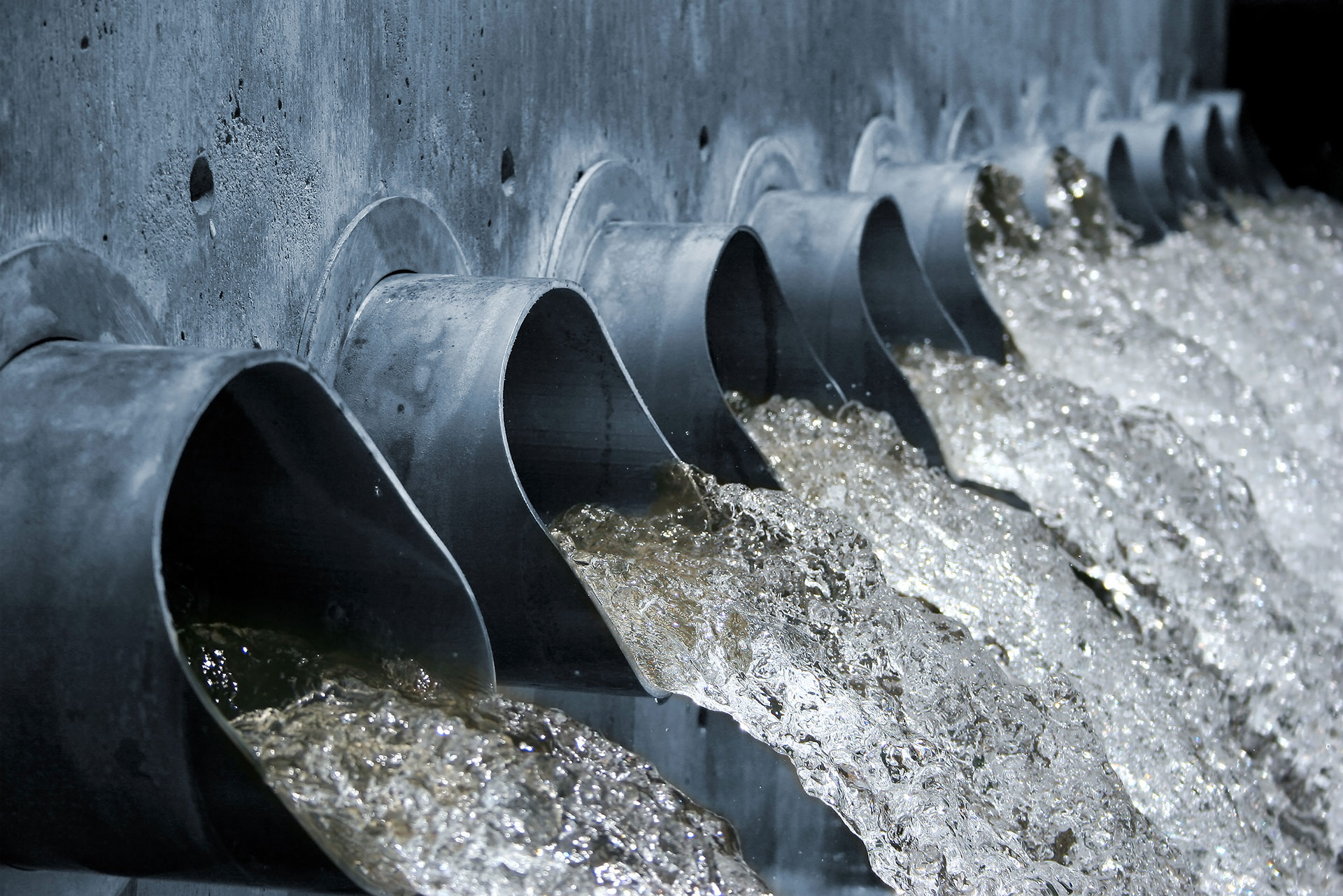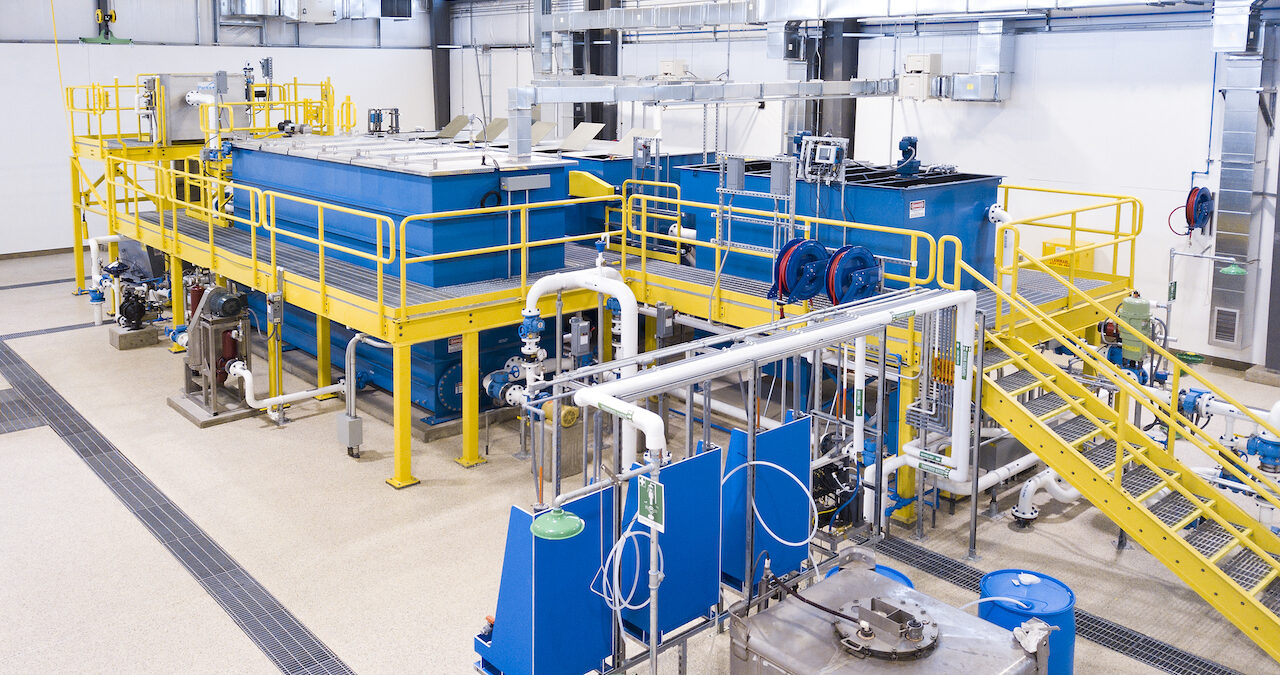Industrial Waste Water Treatment-- Comprehensive Solutions for Wastewater Disposal
Industrial Waste Water Treatment-- Comprehensive Solutions for Wastewater Disposal
Blog Article
Innovations and Developments in Hazardous Waste Water Therapy Technologies
The landscape of commercial wastewater therapy is going through a transformative shift, driven by advancements that improve both efficiency and sustainability. Arising technologies, such as membrane layer bioreactors and microbial fuel cells, are redefining pollutant elimination processes while adding to energy generation. Resource recovery techniques are getting grip, straightening with circular economy concepts. As regulative requirements advance, the combination of AI and artificial intelligence right into wastewater administration systems assures to streamline operations and make certain conformity. However, the full effects of these improvements elevate essential questions concerning their scalability and long-lasting impact on market methods.
Overview of Drainage Treatment Technologies
Wastewater therapy innovations incorporate a series of techniques created to get rid of impurities from industrial effluents before their launch right into the setting. These modern technologies are crucial for keeping ecological balance and guaranteeing compliance with environmental regulations. The main categories of wastewater therapy include physical, chemical, and biological approaches, each offering distinctive functions based on the nature of the pollutants existing.

Biological treatment approaches use microbes to degrade raw material, making them particularly efficient for organic-rich effluents. Strategies like activated sludge and biofilm activators harness the all-natural deterioration capacities of germs, leading to substantial decreases in biochemical oxygen need (BODY)
Advanced Purification Methods
Advanced purification techniques stand for a vital advancement in the world of industrial wastewater therapy, improving the efficiency of impurity elimination procedures. Industrial Waste Water Treatment. These approaches incorporate a series of innovations, consisting of microfiltration, ultrafiltration, nanofiltration, and turn around osmosis, which offer sequential obstacles for different bit dimensions and chemical frameworks
Microfiltration and ultrafiltration utilize membrane systems to eliminate suspended solids, bacteria, and bigger organic particles, enhancing the quality of effluent before further therapy. Nanofiltration connects the gap between ultrafiltration and reverse osmosis, successfully eliminating divalent ions and organic compounds, thus minimizing the lots on downstream processes.
Reverse osmosis offers the greatest level of purification by enabling only water and small particles to go through its semi-permeable membranes, making it excellent for recovering high-quality water from commercial effluents. Current improvements in membrane innovation, consisting of the growth of more fouling-resistant and resilient materials, have actually dramatically enhanced functional performance and lowered expenses.
Incorporating these innovative filtration techniques not just improves the overall therapy procedure however additionally adds to sustainability initiatives by making it possible for water reuse and source healing in industrial settings. (Industrial Waste Water Treatment)
Biological Therapy Advancements

Moreover, the advancement of engineered organic systems, such as membrane layer bioreactors (MBRs), integrates organic treatment with advanced membrane purification. This integration enables for greater effluent high quality and decreased impact, making it suitable for space-constrained industrial facilities. Technologies in genetically engineered bacteria have also arised, boosting the biodegradation of details contaminants, such as drugs and heavy steels, that are typically challenging to get rid of.
In addition, the implementation of bioaugmentation strategies, where useful microbes are introduced to enhance the existing organic therapy procedures, has revealed appealing lead to boosting therapy performance. These innovations jointly symbolize a pattern towards even more sustainable visite site and efficient organic treatment methods that can adapt to the advancing complexities of industrial wastewater streams. As markets remain to prioritize environmental conformity, these biological innovations will play a crucial duty in wastewater management.

Source Healing Techniques
In industrial setups, the combination of resource healing methods has ended up being increasingly vital for enhancing sustainability and minimizing waste. These approaches concentrate on drawing out important products and energy from wastewater streams, thus changing potential pollutants into recyclable sources.
One popular technique is nutrient recuperation, where nitrogen and phosphorus, typically existing in excess in wastewater, are captured and exchanged fertilizers. This not only lowers environmental effects yet also offers a circular economy solution for farming applications. Additionally, technologies such as anaerobic food digestion enable the conversion of natural waste right into biogas, a renewable resource source that can counter nonrenewable fuel source usage in commercial operations.
In addition, progressed filtration and membrane layer modern technologies facilitate the recovery of you can try these out industrial by-products such as salts and steels. These recouped materials can be rehabilitated into production procedures, decreasing the need for virgin sources.
Future Fads in Waste Water Monitoring
As industries progressively prioritize sustainability, the future of wastewater administration is established to go through substantial improvements. Technical advancements, such as artificial intelligence and artificial intelligence, will certainly allow a lot more effective surveillance and management of wastewater systems. These innovations can forecast maintenance demands, enhance treatment procedures, and enhance decision-making, inevitably minimizing functional prices and ecological impact.
Additionally, the integration of round economic situation concepts will play a critical function in wastewater administration. Industries are expected to shift towards systems that not only deal with wastewater yet likewise recuperate useful sources, such as nutrients, water, and energy. This transition will certainly lessen waste and promote the reuse of products, lining up with international sustainability goals.
Arising treatment methods, such as membrane bioreactors and advanced oxidation processes, will certainly further boost the efficiency of wastewater therapy, permitting higher high quality effluents suitable for reuse. Additionally, regulative frameworks are most likely to develop, emphasizing more stringent requirements for wastewater discharge and motivating industries to adopt ingenious therapy services.
Verdict
Finally, the development of commercial wastewater treatment modern technologies shows a significant shift towards boosted efficiency and sustainability. Advancements in innovative purification methods, biological treatments, and resource recuperation approaches highlight the industry's commitment to ecological stewardship. The combination of expert system and artificial intelligence additionally optimizes these procedures, making sure regulative compliance and promoting a round economy. Continued advancements in these locations will certainly play a critical function in shaping the future of wastewater administration and safeguarding vital water resources.
The landscape of industrial wastewater therapy is undertaking a transformative shift, driven by advancements that boost both effectiveness and sustainability.Wastewater therapy innovations incorporate a range of methods created to remove pollutants from go to this website commercial effluents prior to their release right into the atmosphere.Using the power of biological procedures has led to substantial developments in the therapy of commercial wastewater.Additionally, the execution of bioaugmentation techniques, where useful germs are presented to boost the existing biological treatment processes, has actually revealed appealing results in enhancing treatment efficiency. These technologies collectively symbolize a pattern in the direction of more lasting and effective organic treatment methodologies that can adjust to the evolving complexities of commercial wastewater streams.
Report this page